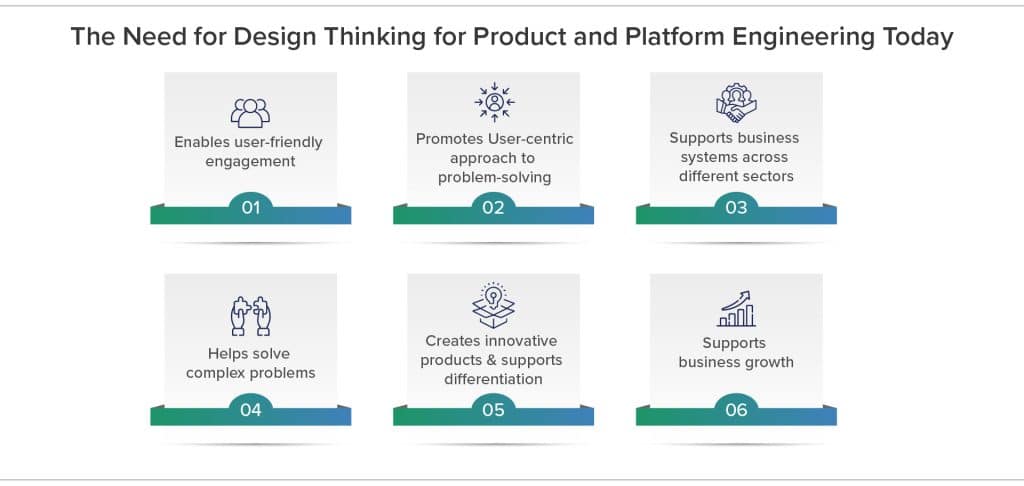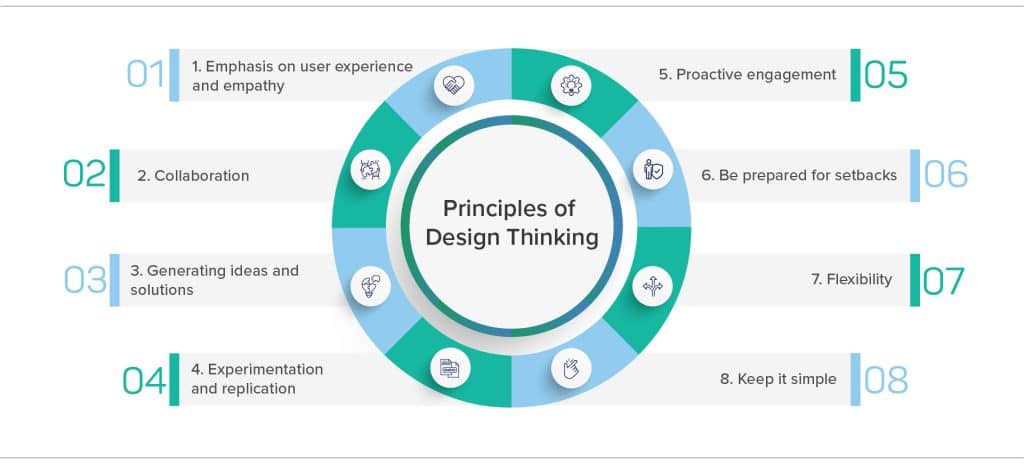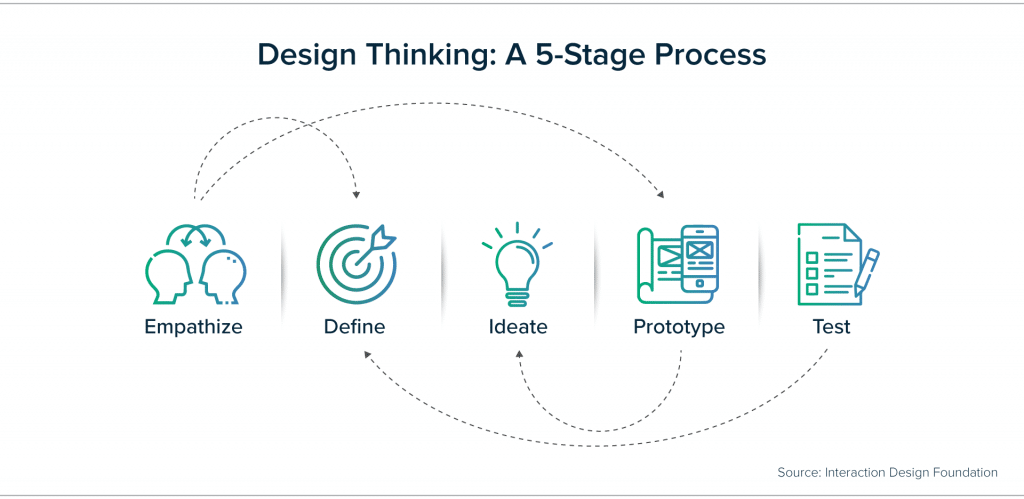Leverage a problem-solving approach to create paradigm solutions for improved products and services that get your business closer to your customers.
Traditionally businesses would focus on enhancing the functionality and looks of their product to improve sales. However, this approach is fast changing, and enhancements are not just about aesthetics.
Businesses today want meaningful relations with their customers. Therefore, they consistently seek consumer feedback, leveraging design methodologies to create entire systems to deliver products and services and help businesses to achieve their objectives.
As a result, organizations are under constant pressure to innovate. Industries across sectors want actionable, practical, and innovative solutions that meet their needs. Uber is an excellent example of disruptive innovation that has improved the process of hailing a taxi, giving the company its competitive edge.
But it doesn’t end here. Game changers like Uber and Airbnb face the challenge of continuous innovation to sustain or further their ranking in their respective markets. Innovation can’t be a one-time event; it must be part of the company’s work culture. That’s where design thinking step in.
What is design thinking?
Design thinking originated as a human centered way of teaching engineers a creative approach to problem-solving as designers do. The concept began to gain popularity through the 80s and 90s. By 2005, the Stanford d.school started teaching design thinking as an approach to technical and social innovation.
Design thinking combines an ideology and an iterative process that considers multiple factors to solve complex problems in a human centered way.
It involves using both the left brain (logic) and the right brain (creativity) to find connections for problem identification, ideation, and innovative solutions that are:
- Attainable: They can be practically developed into functional products or processes.
- Desirable: They satisfy a genuine customer need or expectation.
- Sustainable: They can be implemented over a continued period.
- Cross-domain: Design inspirations from other domains can be applied in the relevant context.
The need for design thinking for product and platform engineering today
Design thinking aims to transform ideas into actual, verifiable products or processes in a cost and time-efficient manner by leveraging information architecture, branding standards, wireframes, visual mocks, user journey & interaction design, etc.
Let’s understand the role of design thinking from the point of view supporting everyday processes.

Enables user-friendly engagement
Design thinking can be significantly attributed to the rising complexity of modern technology and business, which can take many forms. As a result, people want their interactions with technologies such as web, mobile, kiosk, TV, etc., and other complex systems to be simple and intuitive as they engage with their complex business scenarios.
Sometimes the software, which lies at the heart of the product, needs to be integrated with hardware. While already a complex task, the integration should be intuitive and user-friendly, presenting another challenge.
Sometimes, the problem may be compounded even further. For example, reinventing a health care delivery system. In other instances, the volatile business environment may require a business to experiment with multiple options to stay relevant.
Promotes user-centric approach to problem-solving
Design thinking enables developers and designers to understand their target users’ problems. Usability research and analysis reports help design decisions for different customer-facing solutions’ interfaces.
By implementing a user-centric approach and focusing on human interaction, businesses can leverage design thinking techniques and structured processes that facilitate potential solutions, creative confidence, and idea generation to solve problems.
Supports business systems across different sectors
The design thinking principles apply in diverse fields, including healthcare, which follows a more conservative approach.
For example, Kaiser Permanente used design thinking when working with nurses in patient care to overhaul how nurses change their shifts. The process helped lower errors while transferring information, boosting patient safety, care, and confidence. Here design thinking focused on the services rather than the tools.
Similar to the healthcare sector, not just products and services but entire business systems can be developed through the lens of design thinking.
Helps solve complex problems
Design thinking leverages creativity and structure to solve complex problems. For example, Google uses a design thinking approach to nurture a culture of innovation. Teams develop new ideas and test them creatively and constructively, such as enabling internet access to remote communities.
Creates innovative products & supports differentiation
Design thinking helps develop an understanding of the consumer expectations of a product or service and the infrastructure that enables it. For instance, service innovations – supported by design thinking – like the current e-tailing wave have taken service design to another level.
The value of design thinking methodology can be harnessed by understanding people and user behavior. It facilitates high-impact solutions at the grassroots level, rather than superficially, leading to more relevant products to the markets faster.
Supports business growth
Design thinking facilitates ideas and practical solutions that can be implemented into the product development process until you have built a robust product that delivers on customer requirements and set it up with a solid market placement.
In addition, it enables you to get ahead of the competition and grow your business. By ignoring design thinking, you could waste costly resources in creating products or platforms that don’t effectively deliver the solutions your customers require.
Principles of Design Thinking
Certain principles are crucial to design thinking and making creative solutions a reality. These principles can set you up for superior product and/or platform development from the point of view of consumer problem-solving. They include:

1. Emphasis on user experience and empathy
Design thinking caters to finding solutions responsive to customer needs and user feedback. As compared to the conventional norms, now it’s the user and not technology that drives innovation.
Design-centric organizations encourage teams to observe consumer behavior rather than making general assumptions and understand what people need and want, the emotional and psychological consumer experience, potential barriers, attitudes, and opportunities. Journey maps, persona creation, task analysis, and interviews are some ways to gather data from actual service users. Personas help designers empathize with consumers throughout the design process.
For instance, in finance, the primary contact with customers is through invoices and payment systems. Usually, these are designed for internal business optimization or preset ideas about needs. However, this critical touch point enhances the customer’s impression of the organization when designed around users’ actual needs rather than internal operational efficiencies.
2. Collaboration
Having empathized with your customers, you need to push the envelope further, trying to clarify and fine-tune things further. Review for new unmet needs or unexpected barriers that should redirect your thinking, following which you would need to compile and present this data to business stakeholders. This could range from the information architecture of the application and interaction pattern to visual design, common icons to be used, style guides, etc.
Design thinking supports collaboration between diverse, multidisciplinary teams, i.e., marketing and design teams, which may not usually work with, and ensures that you have actionable cues and guidance for the design process – that supports innovation!
3. Generating ideas and solutions
Once the problem is identified, you start generating many ideas to drive your solutions since design thinking is a solution-based framework. Focus on developing as many ideas and solutions as possible. Challenging your assumptions and studying the different directions the challenge could take; evaluate the opportunities you’ll come by.
Noteworthily, ideation is not only a core design thinking principle but a crucial step in the design thinking process. You must actively focus on the quantity rather than the quality of ideas without worrying about your teammates’ thoughts. Mind-mapping, brainstorming, and other creative methods can now be implemented in a way that all ideas are recorded for onward consideration.
4. Experimentation and replication
Design thinking does not end with idea generation. You now have to develop prototypes, test the design, incorporate changes based on user feedback, etc. In short, design thinking can be a somewhat repetitive process as you identify flaws in the early versions of your proposed solution.
It’s advisable to ideally first test the product internally or release a new service in beta to obtain feedback from real users outside the company before proceeding with the formal launch for your users. In 2014, the Google Primer team released their educational app that contained only 12 lessons as a stripped-down beta version which they tested with select real users. The feedback helped them fine-tune the app’s UX and content ahead of the official Primer app launch a year later.
5. Proactive engagement
Design thinking involves a highly proactive, action-oriented approach to problem-solving. Rather than theorizing about users’ needs, design thinking encourages customer engagement to develop tangible prototypes and test them in real-world contexts.
When testing concepts, be sure to optimize them along the way.
For example, consumer surveys can help determine the style of product you put out next. Insurance business MassMutual leveraged design thinking to attract young adults to purchase life insurance. They conducted user research over two years and, based on their learnings, took two more years of prototyping and testing. The final result was a suite of digital tools to educate young people in making smart financial choices.
On the other hand, market research on the competition can help you identify features to include.
6. Be prepared for setbacks
A design culture recognizes that things always don’t go right the first time. While all aware of Apple’s hits, the Newton tablet, Copland operating system, and Pippin gaming system are some of the company’s misses. Nonetheless, Apple leverages failure constructively, treating it as an innovation cost.
7. Flexibility
Designing for flexibility is based on being prepared for changes to your system in the future. You may want to get more complex in the future or swap out an item or object for another one to match the scale of your project. Where designs are rigid, developers prefer to start working on an entirely new design than modifying the existing one. This impacts the time and costs of the project.
8. Keep it simple
Products developed with an emotional value proposition are generally simpler than competitors’ products or platforms. The straightforwardness stems from deliberate decisions about what the product should do and – equally important – what it shouldn’t. Removing features allows you to offer your customers a simple experience.
Square’s mobile app Cash allows you to do one thing, i.e., to send money to a friend. In organizations like Square, product leaders have realized the importance of leading the market with a restrained focus instead of chasing it with follow-on features.
Stages of design thinking

Empathize
Everything starts with undertanding of 360 degree needs of the user. User personas and empathy maps are an incredible method for documenting it without forgetting about the higher perspective.
Define
This phase is normally the subject of different meetings to generate new ideas with stakeholders to uncover an immaculate user journey supported by data.
Ideate
The ideation stage is tied in with creating whatever number of thoughts as would be prudent without judgment and afterward restricting them down to the ones that can possibly be transformed into a reality.
Prototype
In this stage, prototypes must create immersive experiences through interactions that can be A/B tested, give a taste of the MVP, and facilitate experience measurement.
Testing
In this stage, protoypes are scrutinized by end users to approve assumptions and further launch to market
Challenges to implementing Design Thinking
Many organizations with entrenched cultures face hurdles in adopting a design thinking approach.
A design thinking approach should support faster customer onboarding & increased retention to help achieve desired business outcomes. However, design thinking doesn’t align easily with estimates, making it difficult to calculate the value delivered through a better experience or calculate the return on an investment in creativity.
In addition, transformative innovation is often risky as it involves conjecture and belief. So, where it’s the first time, there’s no way to guarantee its outcome.
Leaders must work harder to create a culture that allows employees to move forward and innovate while following the design principles as a reference point. Design thinking is great for innovation, but expectations must be set around a realistic timeline.
Future Scope of Companies Adopting Design Thinking Process
Today, design thinking is used by organizations not only to build product innovations but to enhance user experience, both within and outside the organization.
For companies with revenue-generating engines that cannot be tampered with, the future involves understanding the limits of innovation in their specific markets. Based on that edge, companies must ideate and test the appropriate/necessary shifts in businesses that take them closer to that edge while creating pathways based on business objectives.
It involves using the principles of strategic foresight and design thinking to embrace uncertainty and discover opportunities and options while taking small but significant chances on those options.
The design thinking framework helps multidisciplinary teams align their customers’ real needs. As a result, they can help businesses get their products to the market twice as quickly, enable more efficient teamwork, and significantly increase return on investment.
Conclusion
Design thinking harnesses the skills of specialists who empathize with customers and have the capabilities to undertake service design activities, including software, hardware, business interactions, and customer experience management.
Adopting design thinking may not be easy at first, but it helps create a work culture responsive to changing business dynamics and empowers individual contributors.
And because the design is the result of empathy and collaboration, it supports a more mindful and sustainable approach to business.
